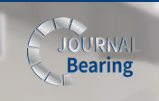Thrust-control tilting pad bearings are sophisticated components essential in modern rotating machinery, such as turbines, generators, and large industrial compressors. Designed to manage axial loads, these bearings contribute to the overall efficiency and reliability of mechanical systems. Their operational principle is rooted in the unique geometry of each pad, which allows for a tilting motion that adapts to load conditions while minimizing friction and wear.
The innovative configuration of tilting pad bearings permits improved load distribution across the bearing surfaces, facilitating enhanced load-carrying capacity and lower operational temperatures. Each pad is typically supported on a pivot, allowing it to tilt under load. As the rotor spins, the dynamic load shifts, causing the pads to tilt and maintain a thin film of lubricant between the pad and the shaft surface. This hydrodynamic behavior significantly reduces direct contact, minimizing wear and extending the lifespan of both the bearing and the shaft.
Expertise in designing and applying thrust-control tilting pad bearings stems from a deep understanding of fluid dynamics, materials science, and mechanical engineering principles. Engineers specializing in this field are crucial for optimizing bearing performance, ensuring they meet specific application requirements, such as high-speed operation or extreme load conditions. The selection of materials for both the bearing pads and housing is critical, as they must withstand various operational stresses while resisting corrosion and fatigue.
Experience with these bearings is garnered through extensive testing and real-world applications, enabling manufacturers to continually refine their designs. Leveraging advanced computational fluid dynamics (CFD) and finite element analysis (FEA), engineers can simulate bearing behavior under diverse conditions, informing design adjustments that enhance performance. The testing phase often includes evaluation in controlled environments before deployment in actual operational settings, providing insights that are essential for reliability.
Authoritative knowledge about thrust-control tilting pad bearings is derived from decades of research and development within the engineering community. Industry standards, such as those set by ASTM and ASME, govern the design, testing, and material selection processes, ensuring that bearings meet rigorous performance criteria. Furthermore, peer-reviewed publications and technical standards serve as vital resources for engineers, offering a wealth of information on best practices, innovations, and case studies.
In conclusion, thrust-control tilting pad bearings are a vital technological advancement in mechanical systems, bringing together expertise, experience, and authoritative standards to deliver reliable and efficient performance in a wide array of industrial applications. Their design and operation reflect a commitment to precision engineering, underscoring their importance in the evolution of modern machinery.
